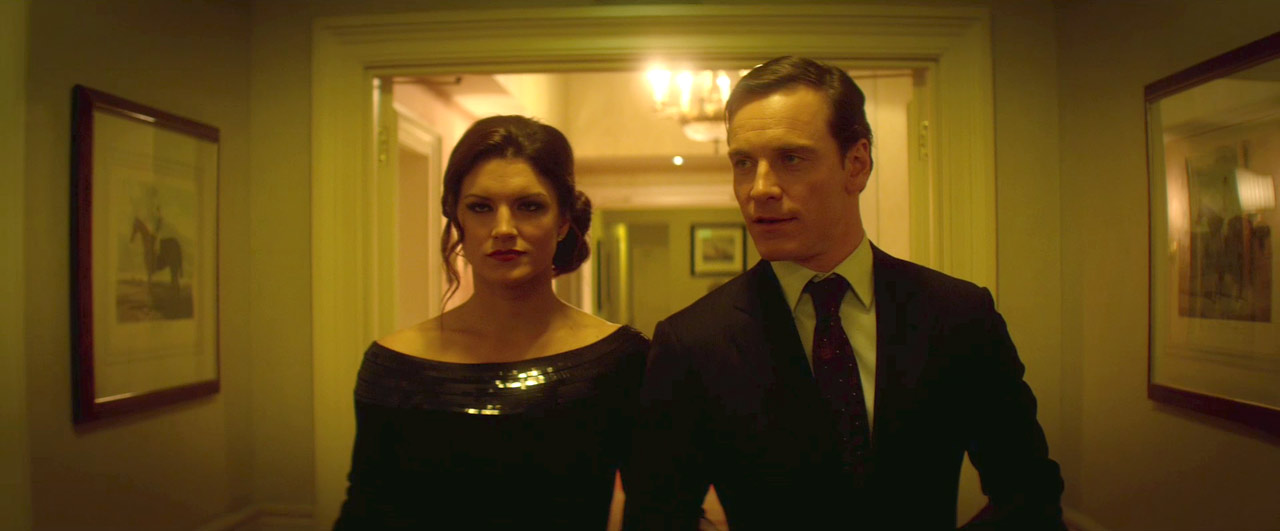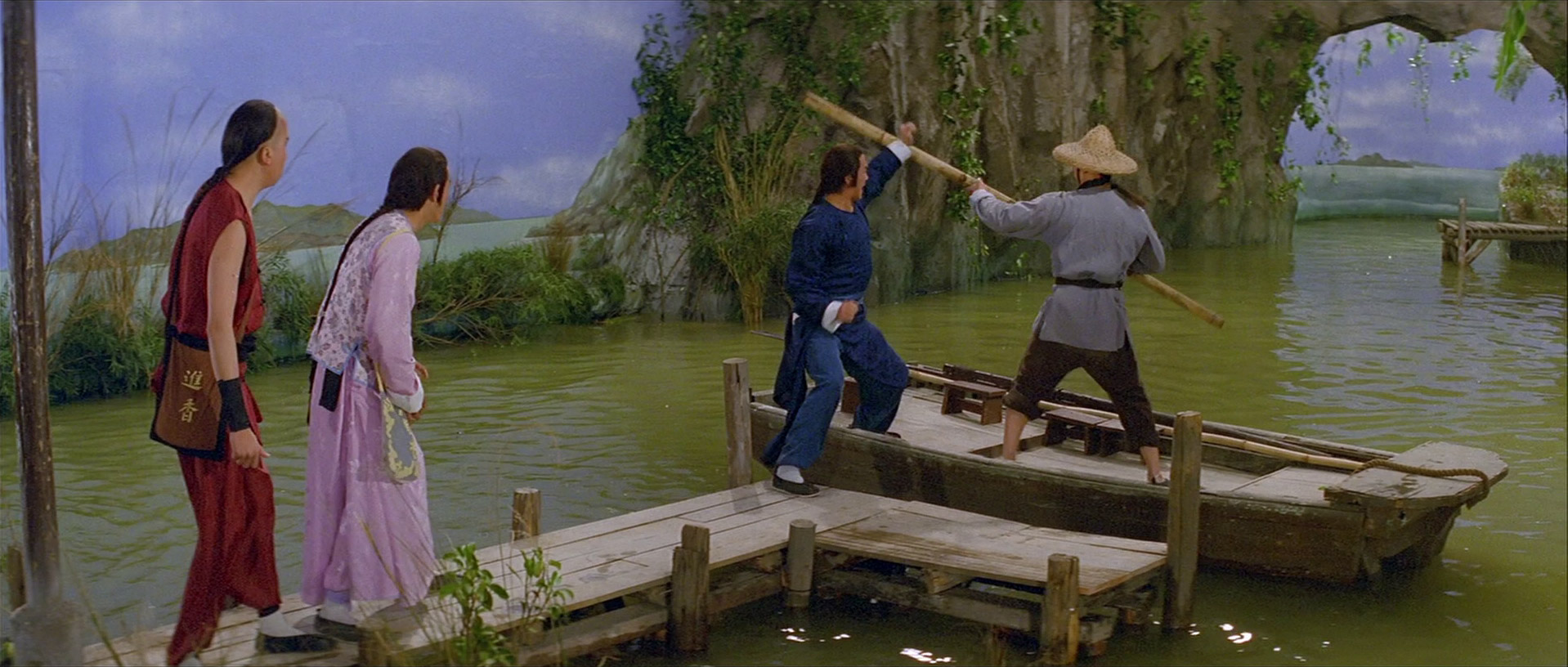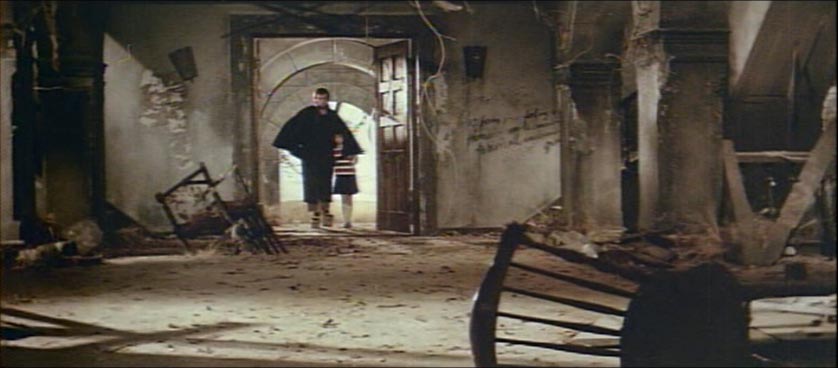District 13: Ultimatum
District 13: Ultimatum is at its best and silliest in the opening reels, which place French supercop Damien Tomaso (the lanky, bald Cyril Raffaelli, who's also the film's stunt coordinator) in a chaotic undercover assignment — he's in the back room of a nightclub, decked out in a dress with a peekaboo ass and masquerading as a kind of courtesan to a Chinese drug kingpin. When his backup arrives, all hell breaks loose. The sequence is staged with tongue tucked firmly in cheek — the contrast between Raffaelli's muscular, manly frame and that of his obvious female body-double is faintly hilarious — but it more or less brings the goods, staging an extended martial-arts fight that plays as an affectionate tribute to Jackie Chan in his prime. In other words, props matter, from the stepladder that brings the pain when villains are slammed into it to the priceless Van Gogh painting that Tomaso employs as a delicate weapon at his disposal. You'll laugh, you'll wince. It's a good time.
Viewers met Tomaso in 2004's District 13, the Luc Besson-written and -produced French film that introduced parkour to international audiences. The free-running technique that has heroes cannonballing through the air from rooftop to rooftop and rolling smartly to take the sting out of hard landings made its unmistakable mark on au courant thrillers from Casino Royale to The Bourne Ultimatum, qualifying it as perhaps the decade's most influential action movie. District 13 was a lot of fun, not just because of the boundless athleticism on display, but because of Besson's cheerfully allegorical scenario, which had the French government dealing with problems in the Parisian slums by simply walling off huge chunks of the city (the "District" of the title, abbreviated to "D13") and refusing to let the lower-class inhabitants out to trouble the bourgeoisie.
The sequel offers more of the same (though director Pierre Morel ran off to bigger things, like the Liam Neeson revenge potboiler Taken and the announced Dune remake), this time catalyzing the action by having Tomaso, who made friends inside D13 during the first film, arrested on phony drug charges by officials who need him out of the way as they execute a plan to trick the hilariously ineffectual French president (Philippe Torreton) into bombing the crime-ridden neighborhood down to the topsoil so that a shady government contractor called Harriburton (see what they did there?) can take on the lucrative job of urban renewal. On his way to jail, Tomaso manages to summon his buddy and D13 denizen Leïto (parkour progenitor David Belle), who busts him out of his cell and leads him back to the hood, where the duo recruits a ragtag assemblage of local bosses to save the day.
When D13: Ultimatum is firing on all cylinders, it's a bad-ass action movie, with Belle and Tomaso leaping easily through the air and taking out their adversaries with fist, foot, and the occasional improvised weapon. When it functions as a delivery mechanism for a social message, it's corny as all hell, but still pleasant enough. Director Patrick Allessandrin maintains a light touch, which means the film's repeated depictions of cold-blooded murder go down as easily as possible. And the screenplay takes time out for a superficial look at philosophical disagreements inside D13.
For instance, Leïto is determined to shake up the system, spending his time on subversive activities like blowing holes in the containment wall. One of the neighborhood bosses takes him to task for that, insisting that the more important task is to build a livable society inside D13, rather than being a nuisance. (Being a nuisance is obviously more fun and cathartic, but the film doesn't go so far as to scold Leïto on taking the easy way out.) The film spends enough time playing up the fundamental decency of the tattooed and racially coded slumdwellers — there's a black gang, an Asian gang, an Arab gang, a skinhead gang, and a gypsy gang — as they discover shared goals that it's a shame (and, presumably, an indication of the film's impulses toward commerce) Besson and Allessandrin couldn't find a more important role for a non-Caucasian. If you have dark skin, you're a supporting player, and that circumstance blunts the film's aspirations to inclusiveness.
One final note: the film's R rating (for "some violence, language and drug material") seems misguided in light of the fact that Ultimatum, for its prodigious violence, is essentially an anti-gun movie. Leïto and Tomaso make things right mostly by relying on their wits and sheer physical prowess to move freely in a world governed by something resembling martial law. The use of a gun represents distinctly unsportsmanlike conduct. With all the bang-bang shoot-shoot in routine Hollywood genre pieces, it's almost jarring to see a dystopian action film where drawn pistols signal weakness or evil intentions. If you compare this to, say, the PG-13 American cut of Taken, it's clear that Ultimatum isn't an especially brutal experience.
Posted by on February 4, 2024 6:45 PM



